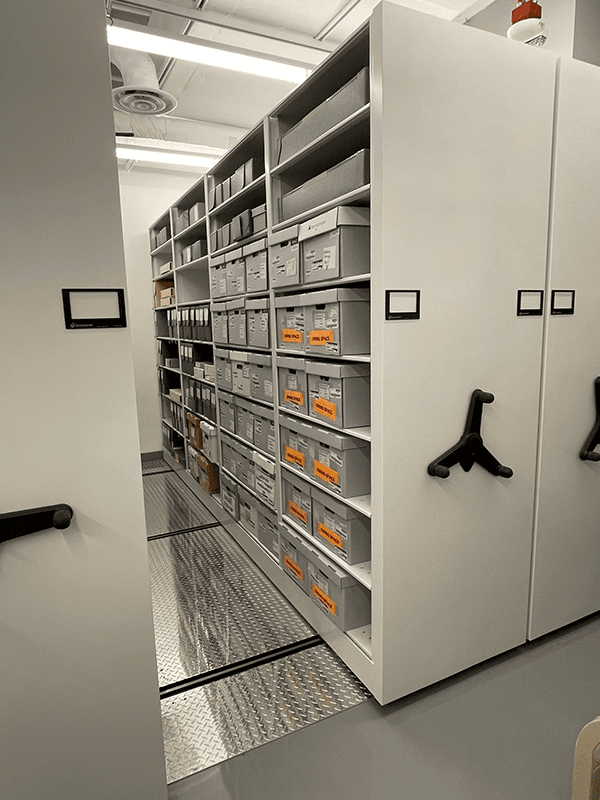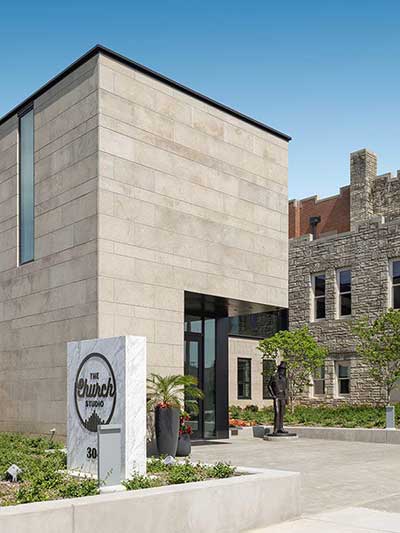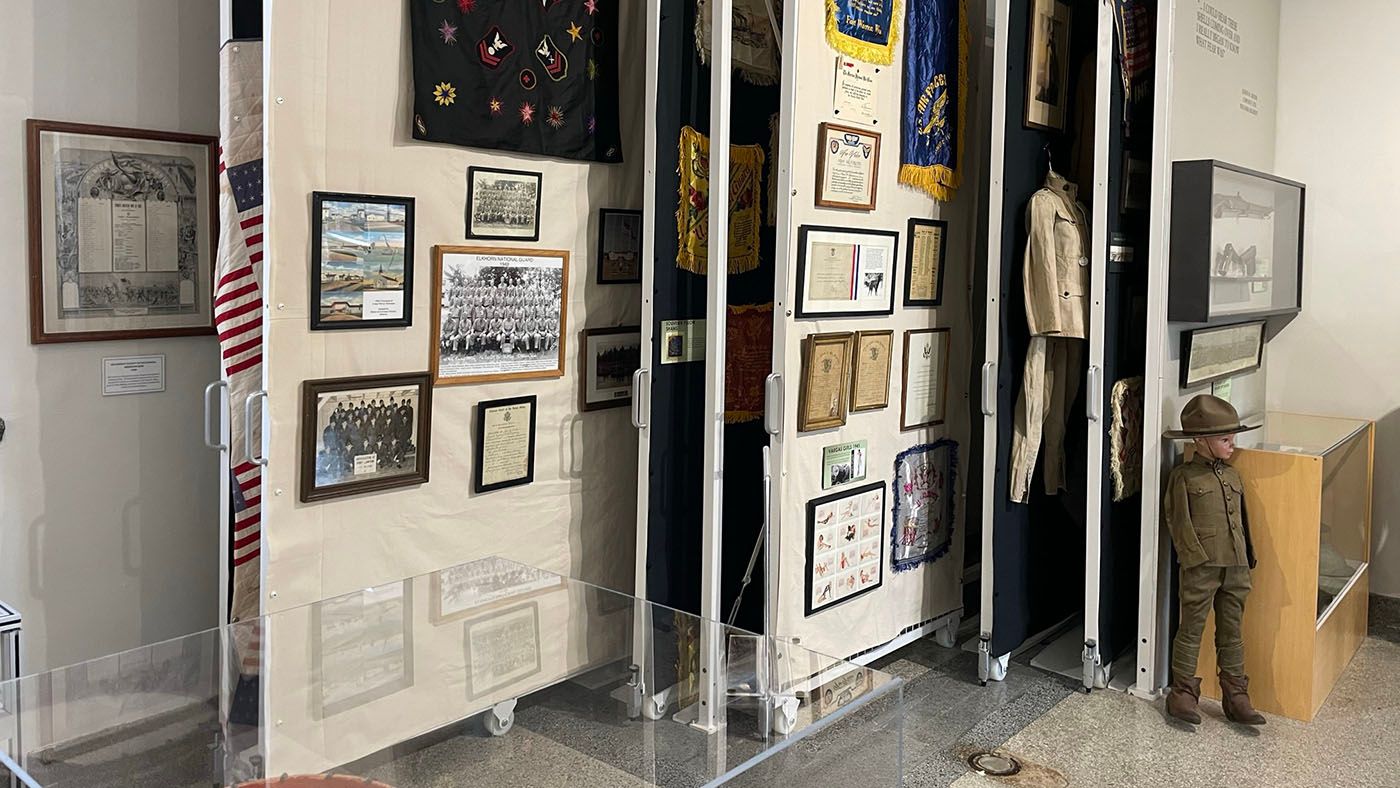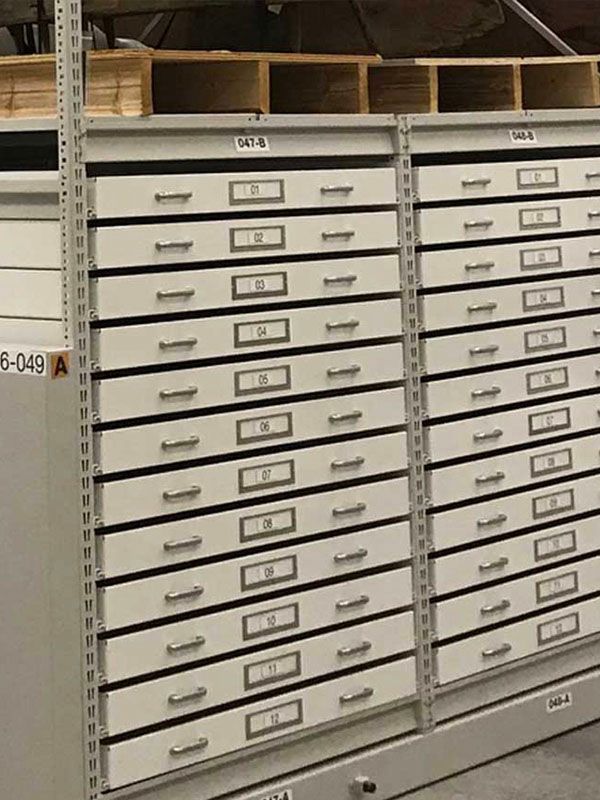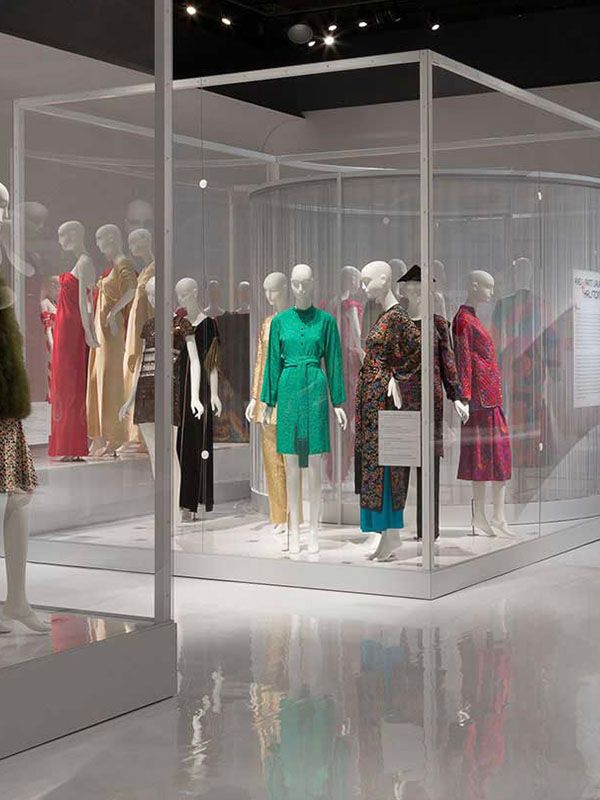Chicago, Illinois
Protecting history at The Field Museum of Natural History in Chicago
Spacesaver's solutions help chart new territory in collections management and research.

The CRC is home to 2.2 million objects and specimens for use by nearly 200 scientists and researchers of The Field Museum’s Anthropology, Geology, and Zoology departments. The facility also serves as a working laboratory for researchers from around the world who study collections on site. The design of the two-level, underground 180,000-square-foot CRC, combined with the institution’s goals, dictated the development of creative and adaptable storage solutions that would:
- Protect and preserve collections for perpetuity
- Match the unique storage needs of collections from various departments, as well as the needs of scientists and researchers
- Capitalize on existing storage systems, including the use of age-old drawers, trays, cabinets and shelving
- Make the most of valuable CRC space; i.e. maximize storage capacity while maintaining accessibility
- Improve accessibility to objects and specimens, yet also leave adequate room for onsite laboratories and work areas
- Ensure the safety of employees and visiting researchers; and
- Accommodate evolving collections and future growth

When The Field Museum of Natural History in Chicago outgrew its collections space, it built a $65 million state-of-the-art Collections Resource Center (CRC). The new facility drove the need for storage solutions tailored specifically to match the CRC’s unique purpose as both a collections repository and a premier research facility.
Specialization on a Grand Scale
The Field Museum turned to Bradford Systems Corp., a local member of the Spacesaver Group. Together with Spacesaver’s in-house planners and engineers, the team developed strategically designed solutions.
The result is a unique mix of specialized storage systems engineered to match each collection manager’s specifications, as well as the storage requirements of individual objects and groups of collections. The storage solution includes:
- Specially designed High Density Mobile Storage systems with an array of shelving, trays and cabinetry configurations of varied dimensions, as well as pullout drawers, trays and art racks. The mechanical-assist mobile systems total 274 moveable carriages.
- Fixed shelving of virtually every grade, style and load capacity. All told, the CRC incorporates over 2,700 sections of shelving.
- Bulk and pallet racking with varied weight load capacities and heavy-duty cantilevered shelving for oversized objects.
- Uniquely designed vertical storage racks and custom sliding art panels.
- High-density Mobile Systems and fixed-shelving systems that incorporate trays and cabinets. In all, the CRC retained the use of 15,000 existing shelves and 250 cabinets.
"We decided to work with Bradford Systems Corp. and Spacesaver based on their industry experience, capabilities and willingness to adapt. It’s clear we made the right choice given the end result, which is a unique solution ideally suited to our collections."
- Scott J. Demel, Ph.D, Head of Collections Management, Department of Anthropology, The Field Museum
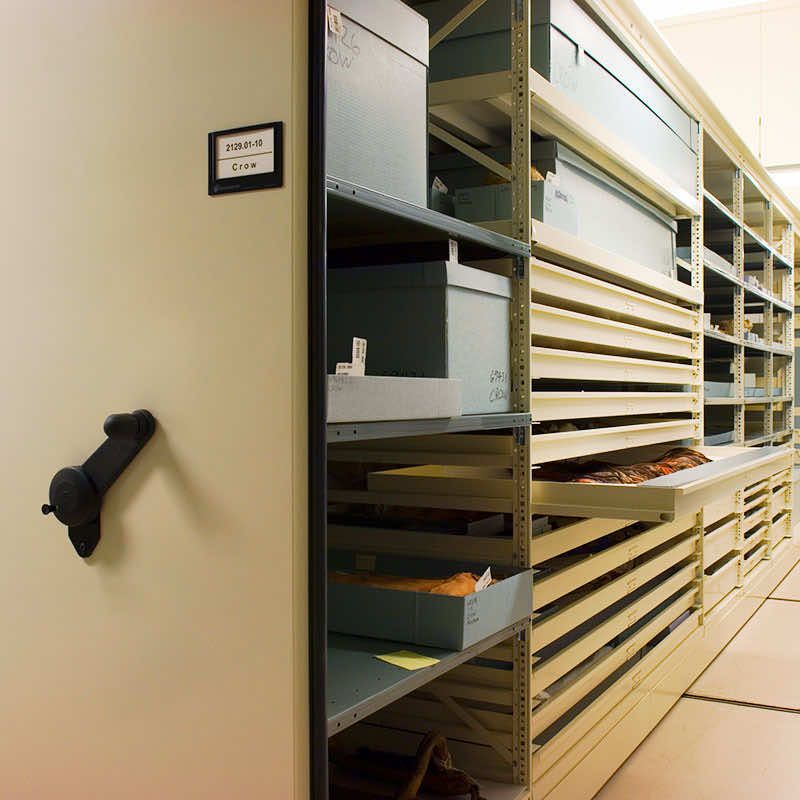
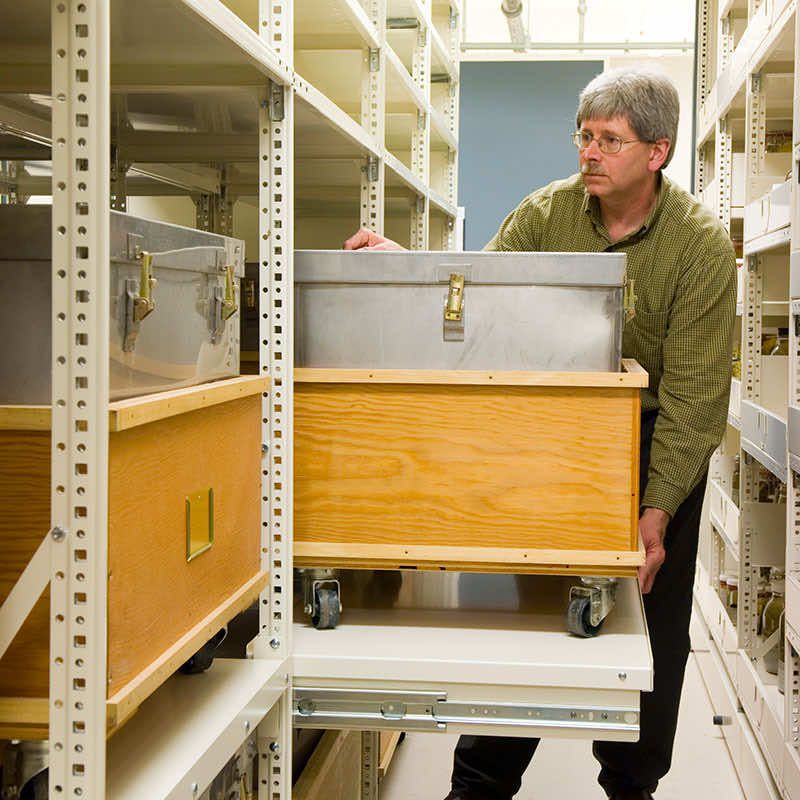
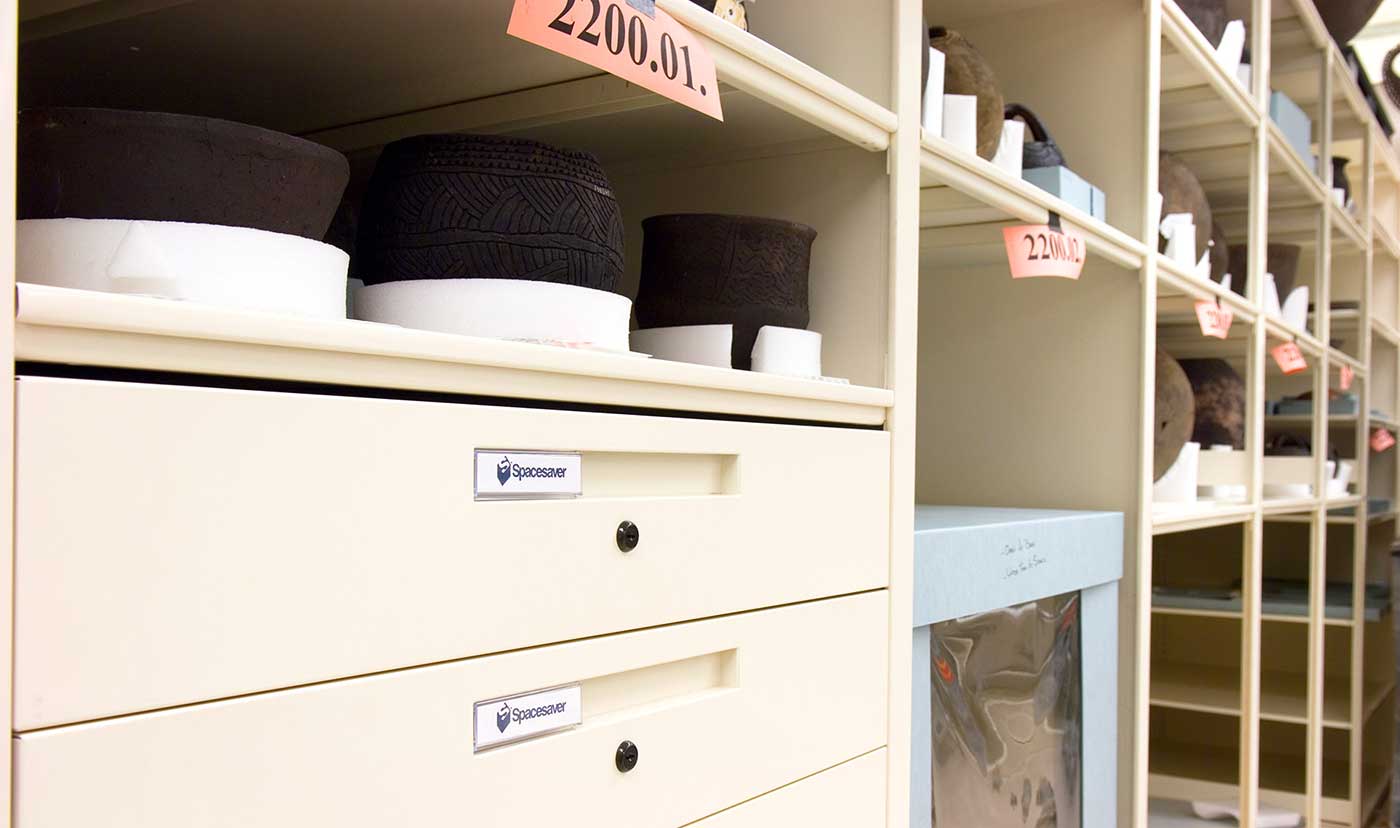
Spacesaver’s in-house planners and engineers collaborated with the project team to create museum storage solutions that save space and protect the institution’s collections.
Storage Solved
The advanced storage systems achieve the overriding goal of protecting history. The High-Density Mobile Shelving units in particular feature a host of enhancements designed specifically to protect collections. These include synchronous drive carriage systems to guard against vibration without compromising efficient use; customized drives that provide balanced movement even under unbalanced loads; reduced gear ratios for controlled movement; recessed anti-tip rails to provide stability; all-wheel guides; and inert paint finishes. Additionally, the systems in the wet collections area feature leak detection sensors within the rails.
In the end, customized storage solutions meet the museum’s highly complex and exacting needs – allowing it to chart new territory with a state-of-the-art facility that sets the standard in museum collections and research.
Storage for Protection and Preservation
Storage for Protection and Preservation

